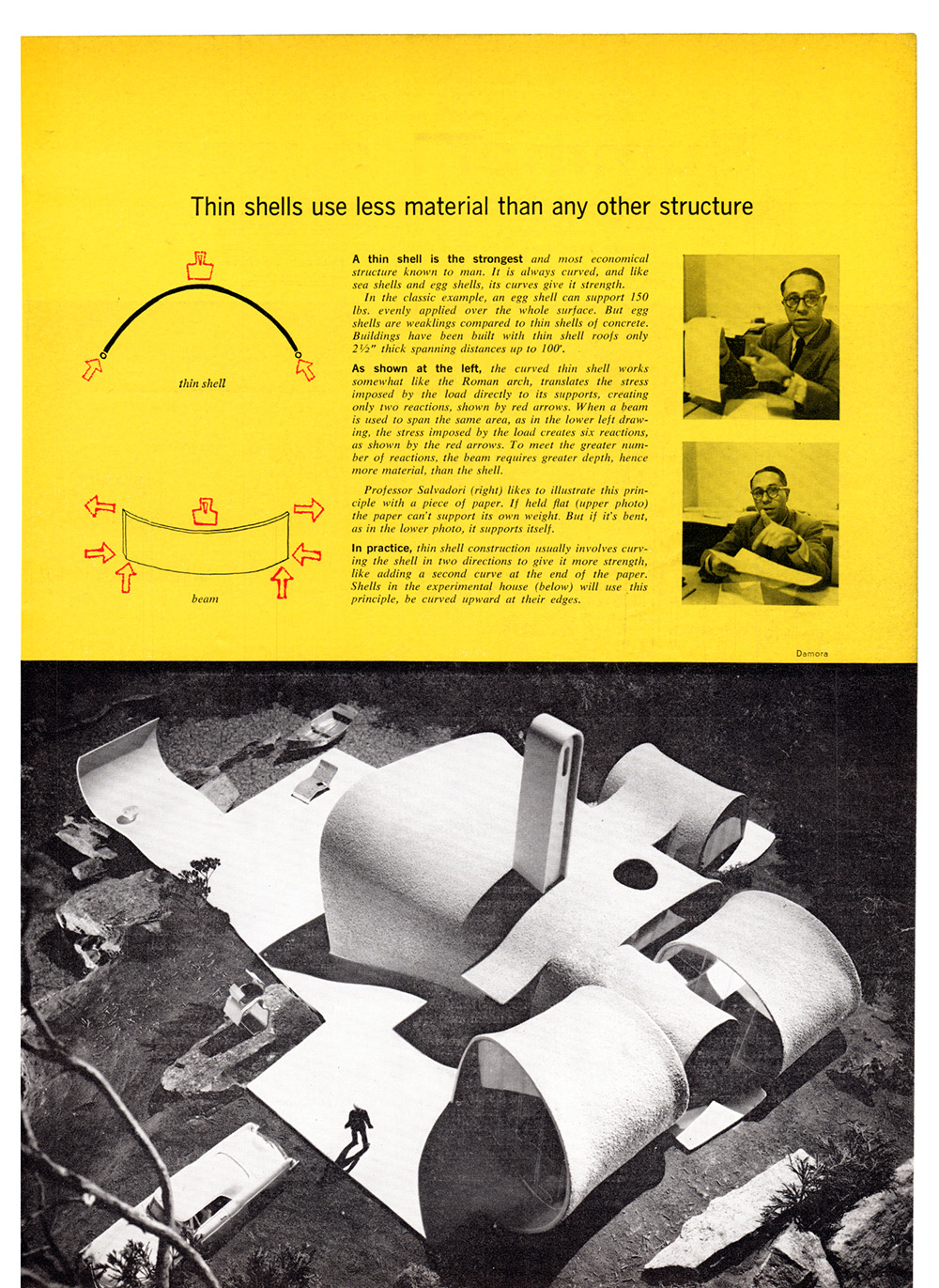


beam
A thin shell is the strongest and most economical structure known to man. It is always curved, and like sea shells and egg shells, its curves give it strength.
In the classic example, an egg shell can support 150 lbs. evenly applied over the whole surface. But egg shells are weaklings compared to thin shells of concrete. Buildings have been built with thin shell roofs only 2V2" thick spanning distances up to 100'.
As shown at the left, the curved thin shell works somewhat like the Roman arch, translates the stress imposed by the load directly to its supports, creating only two reactions, shown by red arrows. When a beam is used to span the same area, as in the lower left drawing, the stress imposed by the load creates six reactions, as shown by the red arrows. To meet the greater number of reactions, the beam requires greater depth, hence more material, than the shell.
Professor Salvadori (right) likes to illustrate this principle with a piece of paper. If held flat (upper photo) the paper can't support its own weight. But if it's bent, as in the lower photo, it supports itself.
In practice, thin shell construction usually involves curving the shell in two directions to give it more strength, like adding a second curve at the end of the paper. Shells in the experimental house (below) will use this principle, be curved upward at their edges.
Thin shells use less material than any other structure
Damora